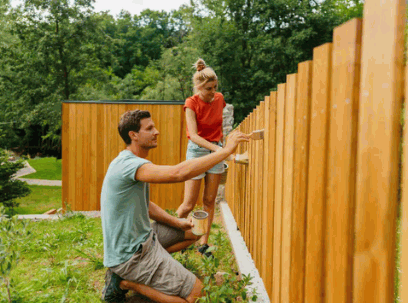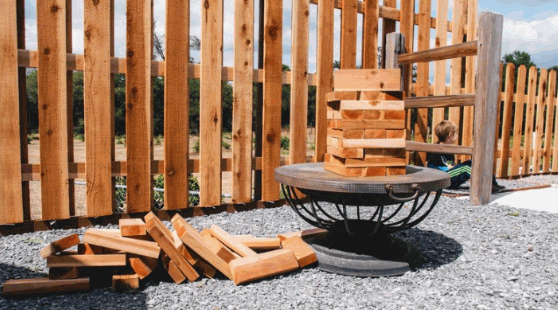
If you're considering installing a fence around your property, wood fencing is a classic choice that offers a range of benefits.
Wood fencing can enhance the aesthetic appeal of your outdoor space while providing privacy and security, thanks to its natural beauty, durability, and versatility.
Choosing the best type of wood for your fencing project is crucial, as different varieties offer varying levels of durability, maintenance requirements, and resistance to pests.
This article explores the different types of wood commonly used for fencing, factors to consider when selecting the best wood for your needs, drawbacks of wood fencing, and proper maintenance tips.
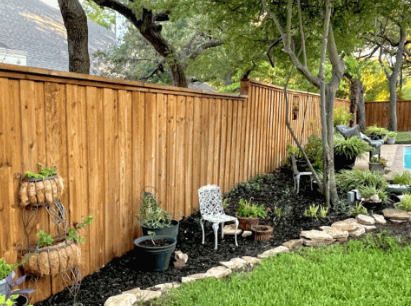
Table of Contents
Wood fencing is a popular choice for creating privacy, delineating boundaries, and adding aesthetic appeal to properties, offering various types and styles to suit different needs and preferences.
One of the key benefits of wood fencing is its natural beauty that blends seamlessly with outdoor landscapes, providing a warm and inviting feel to the surroundings. Plus visual appeal, wood fences also offer a sense of security and seclusion, making them ideal for residential properties. Whether it's a classic picket fence, a sturdy stockade fence, or a charming lattice design, wood fencing can be customised to match the style of a property. The versatility of wood fences allows for both traditional and modern interpretations, catering to a wide range of architectural aesthetics.
Find out more: How To Install Glass Pool Fencing
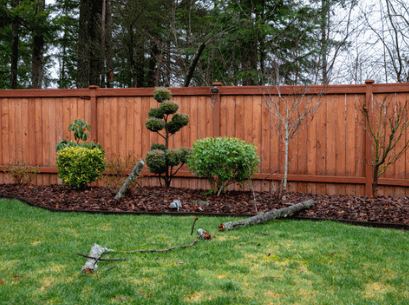
Wood fencing offers numerous benefits, including durability, cost-effectiveness, and versatility, with options like Western Red Cedar, Siberian Larch, Iroko, and Alaskan Yellow Cedar providing various advantages for different applications.
Wood fencing is highly sought after for its aesthetic appeal, offering a range of styles and timber species that can enhance the privacy and visual charm of any property.
One of the key visual benefits of wood fencing is its versatility in complementing various architectural styles, from traditional to modern. The natural beauty and warmth of timber can add character and sophistication to a property's exterior.
Wood fencing comes in different styles such as picket, privacy, and post-and-rail, each offering a unique visual appeal that can elevate the overall look of a landscape. The choice of timber species, such as cedar, redwood, or pine, plays a crucial role in determining the aesthetic impact of the fence.
Certain wood species, such as Western Red Cedar, Siberian Larch, and Iroko, are known for their durability, making them excellent choices for long-lasting fencing solutions.
These wood types have intrinsic properties that contribute to their durability. Western Red Cedar, for example, contains natural oils that help protect it from decay and insect damage, ensuring it can withstand harsh weather conditions effectively. Siberian Larch is renowned for its high density and resin content, making it resistant to rot and decay. Similarly, Iroko is a dense hardwood with impressive rot resistance, ideal for long-term outdoor use.
The tight and straight grain of Western Red Cedar and Siberian Larch enhances their strength and stability, reducing the risk of warping or twisting over time. Iroko's durability is further enhanced by its resistance to moisture and decay, giving it a long lifespan even in exposed environments.
Wood fencing is incredibly versatile, allowing homeowners to choose from various styles and installation methods to suit their specific boundary and design needs.
From classic picket fences to modern horizontal slat designs, wood fencing offers a plethora of options to enhance the aesthetic appeal of any property. Whether you prefer a rustic cedar fence for a traditional look or a sleek redwood fence for a contemporary feel, there are endless possibilities to complement your home's architecture.
The flexibility of wood fencing allows for customisation in height, spacing, and overall design, catering to different privacy and security requirements. With options for DIY installation or professional assistance, homeowners have the freedom to choose the most suitable approach based on their skill level and time availability.
One of the significant benefits of wood fencing is its cost-effectiveness, especially when considering the various types available and the relatively low maintenance required for certain species.
Regarding wood fencing, options like cedar, pine, and redwood are popular choices, each with its unique characteristics and price points. While cedar is known for its durability and natural resistance to insects, pine is more budget-friendly but may require more maintenance over time. Redwood, on the other hand, offers a beautiful aesthetic and excellent durability, making it a higher-end option.
The overall cost-effectiveness of wood fencing is influenced not only by the initial material and installation costs but also by the long-term maintenance requirements. Regular staining, sealing, and repairs are essential to extend the lifespan of a wood fence and prevent costly issues down the road.
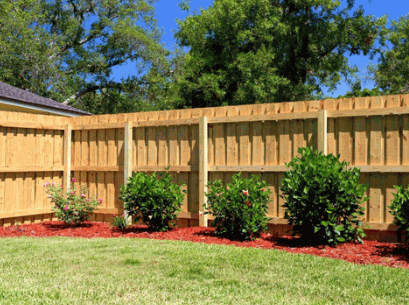
There are several types of wood used for fencing, including Cedar, Redwood, Pine, Spruce, Cypress, and Douglas Fir, each offering unique characteristics and benefits that make them suitable for different applications.
Cedar, particularly Western Red Cedar, is prized for its durability and natural resistance to weather conditions, making it a popular choice for fencing.
Western Red Cedar is known for its exceptional straight-grain texture, which adds to its aesthetic appeal when used in construction projects. This type of cedar contains natural oils that act as preservatives, thereby increasing its resistance to decay and insect damage. Due to its low density, Western Red Cedar is easy to work with, making it a preferred material for craftsmen and DIY enthusiasts alike. Its ability to withstand harsh environmental elements, such as moisture and UV rays, further contributes to its longevity and suitability for outdoor applications.
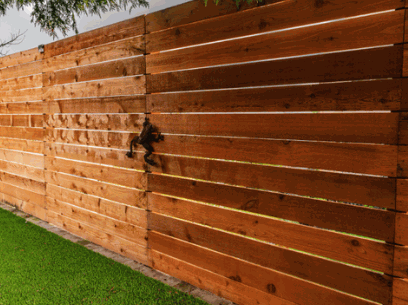
Redwood is known for its rich color and durability, requiring minimal maintenance to keep it looking beautiful over time.
Redwood's natural resistance to pests and decay makes it incredibly durable, and ideal for outdoor structures like decks, fences, and cladding. Its rich color adds warmth and character to any space, enhancing the overall aesthetic appeal of the area. Whether used for furniture or decking, Redwood's stunning appearance complements both traditional and modern design styles effortlessly.
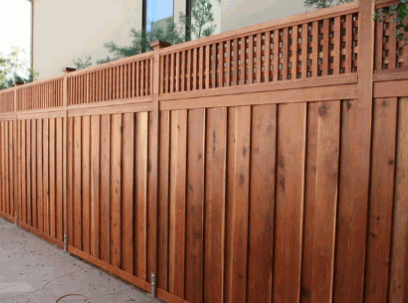
Pine is a cost-effective option for fencing, available in various styles to suit different aesthetic preferences and practical needs.
Whether you prefer a classic picket fence or a more contemporary horizontal slat design, pine can be stained, painted, or left to naturally weather depending on your desired look. The versatility of pine fencing makes it a popular choice for residential properties looking for a mix of affordability and customisation. Pine is easy to work with, allowing for easy installation and repairs. With its durability and charm, pine fencing can add a touch of rustic elegance to any outdoor space.
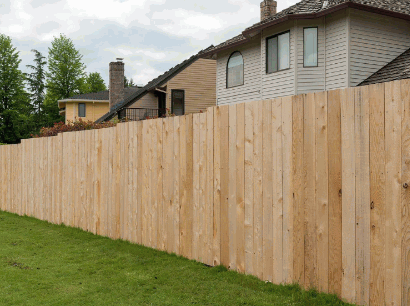
Spruce is a versatile timber that is often used for privacy fencing due to its ability to provide a solid barrier at a reasonable price.
Its natural durability and resistance to decay make it an excellent choice for outdoor applications. Whether you are looking to secure your garden, create a secluded retreat in your garden, or enhance the boundary of your property, spruce fencing offers a practical and aesthetically pleasing solution. The light colour of spruce wood allows for easy customisation through painting or staining, ensuring that your fence complements the overall look of your outdoor space.
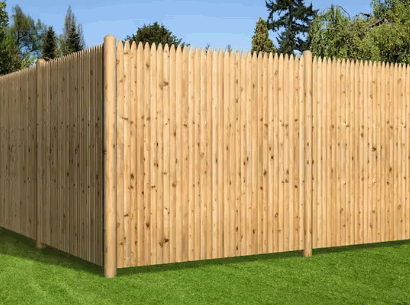
Cypress is an excellent choice for fencing due to its natural resistance to weather and insect damage, ensuring long-lasting performance.
Not only does cypress stand strong against harsh weather conditions such as rain, snow, and sun exposure, but it also repels insects like termites and carpenter bees.
This durability means that fences made of cypress require minimal maintenance, saving you time and money in the long run.
The natural beauty of cypress wood adds a touch of elegance to any outdoor space, enhancing the overall aesthetic appeal of your property.
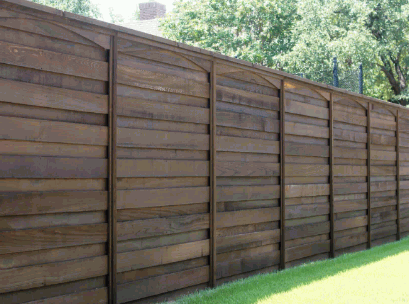
Douglas Fir is a strong and reliable timber that is often used for boundary fencing, providing a sturdy barrier that can withstand various environmental conditions.
One of the key properties of Douglas Fir is its exceptional strength, making it a popular choice for applications that require durable and long-lasting materials. Its high density and tight grain structure contribute to its impressive resistance to wear and tear, ensuring that it can endure the elements with minimal maintenance. Douglas Fir is known for its natural beauty, featuring a rich reddish-brown hue that can enhance the aesthetic appeal of any fencing project.
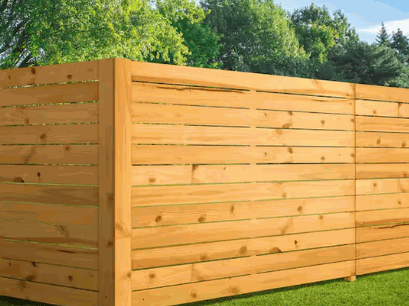
Several factors need to be considered when choosing the best timber for fencing, including climate and weather conditions, budget limitations, maintenance needs, privacy requirements, and aesthetic preferences.
The climate and weather conditions in your area play a crucial role in determining the most suitable and durable wood species for your fencing project.
For instance, in regions with high humidity and frequent rainfall, woods like Cedar and Redwood are popular choices due to their natural resistance to rot and decay. These species have natural oils that make them less prone to moisture damage, ensuring a longer lifespan for your fence.
On the other hand, in areas with extreme heat or dry conditions, hardwoods such as Oak or Black Locust are preferred for their strength and durability. These woods can withstand harsh sunlight and fluctuating temperatures without warping or cracking, making them ideal for arid climates.
When working within a budget, it's important to consider cost-effective wood types that still offer the necessary durability and aesthetic appeal for your fencing needs.
For those looking to balance cost and quality, options like pressure-treated pine and cedar can be excellent choices for fencing projects. Pressure-treated pine is known for its affordability while still providing decent resistance to decay and insects, making it a popular budget-friendly option.
Cedar, on the other hand, is a bit pricier than pine but offers greater natural durability and a visually pleasing appearance that can enhance the overall look of your property. Its natural oils act as a preservative, further adding to its longevity.
By carefully considering the budget-friendly wood options available, homeowners can strike a balance between cost-effectiveness and the desired aesthetics and durability for their fencing projects.
Maintenance requirements vary between different wood species, with some requiring more frequent upkeep to remain durable and visually appealing.
For example, cedar fences are known for their natural beauty and resistance to decay, but they do require regular staining or sealing to maintain their appearance and structural integrity.
On the other hand, pine fences are more affordable upfront but may need to be treated with preservatives regularly to prevent rot and weathering.
Choosing the right wood species for your fence can depend on your budget, desired aesthetic, and willingness to invest time and effort into ongoing maintenance.
Your privacy needs will influence the type of wood and fencing style you choose, ensuring you have an effective boundary that provides the desired level of seclusion.
When considering privacy requirements for your wood fencing, it's crucial to explore the various styles available to find the perfect match for your needs. Some popular options include privacy fences, lattice fences, and picket fences, each offering different levels of seclusion.
Aesthetic preferences play a significant role in the selection of wood species and fencing styles, allowing homeowners to choose options that complement their property's overall design.
When considering wood for fencing, individuals often take into account the visual appeal and style that different species offer.
Each wood species brings its unique charm, enabling homeowners to customise their space to reflect their individual tastes.
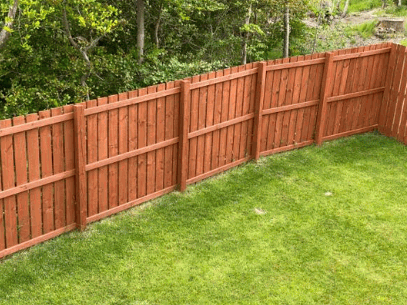
Despite its many benefits, timber fencing has several drawbacks, including susceptibility to rot and decay, the need for regular maintenance, and vulnerability to pests.
Wood fencing is naturally prone to rot and decay, especially if not properly treated or if the wrong species is chosen for the local climate conditions.
Moisture is the primary culprit behind wood rot, infiltrating the fibers and promoting fungal growth. Inadequate airflow around the fencing can also contribute to decay. Choosing rot-resistant wood species like cedar or redwood can significantly prolong the life of the fence.
Regular maintenance such as sealing, staining, and painting helps create a protective barrier against moisture. Inspecting the fence for signs of rot and promptly addressing any issues can prevent extensive damage. Proper installation techniques, including keeping the wood off the ground, can also minimise the risk of rot and decay.
Regular maintenance, including staining and sealing, is necessary to keep wood fencing durable and looking its best over time.
Staining helps to enhance the natural beauty of the wood, adding depth and richness to its appearance whilst also providing a protective barrier against moisture, UV rays, and other outdoor elements. On the other hand, sealing creates a shield that prevents water penetration, rot, and warping, ultimately prolonging the lifespan of the fencing. These two practices work hand in hand to maintain the structural integrity and aesthetic appeal of the wood, ensuring that your fence remains a reliable and attractive feature of your property for years to come.
Wood fencing can be vulnerable to pests, particularly insects like termites, which can cause significant damage if the wood species is not naturally resistant or treated.
Termites are notorious for their ability to penetrate deep into the wood, compromising its structural integrity. To mitigate this risk, opting for cedar or redwood can be beneficial as these species have natural oils that act as deterrents to pests. Pressure-treated wood, infused with chemicals like copper-based solutions, can provide long-lasting protection against insect infestations. Regular inspections and maintenance are also crucial in identifying and addressing any signs of pest damage early on to preserve the longevity of your wood fencing.
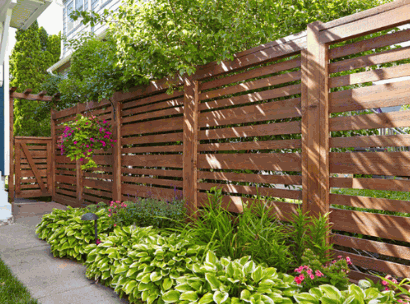
Proper maintenance of timber fencing involves:
Regular cleaning and sealing are essential steps in maintaining wood fencing, protecting it from weather damage, and extending its lifespan.
Wood fencing is exposed to the elements year-round, making it susceptible to damage from rain, snow, UV rays, and more. If left untreated, the wood can warp, crack, or rot, compromising the structural integrity of the fence.
By cleaning the fence regularly, you can remove dirt, mildew, and other debris that can weaken the wood over time. Sealing the wood creates a protective barrier that helps repel water and prevents moisture from seeping into the wood, reducing the risk of damage from swelling or shrinking due to changes in humidity.
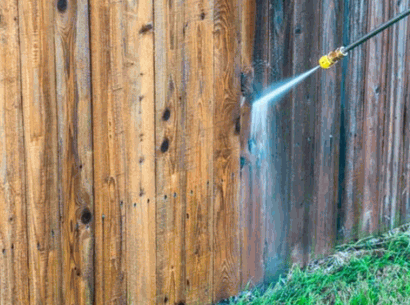
Timely repairing of any damage, whether caused by insects or physical impact, is crucial to maintaining the structural integrity and appearance of wooden fencing.
Failure to address wooden fencing damage promptly can lead to further deterioration and potentially costly repairs down the line. Common types of damage include rot from moisture exposure, cracks from weathering, and holes from insect infestations.
When dealing with rot, it's essential to remove the affected areas and replace them with new wood promptly. For cracks, applying a weather-resistant sealant can prevent water penetration and further splitting. In cases of insect damage, treating the affected areas with appropriate pesticides or hiring a professional exterminator is necessary to stop the infestation from spreading.
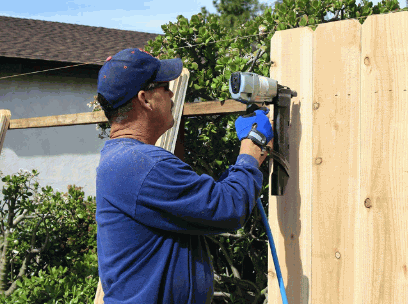
Staining or painting wooden fencing not only enhances its aesthetic appeal but also provides an additional layer of protection, reducing the need for frequent maintenance.
